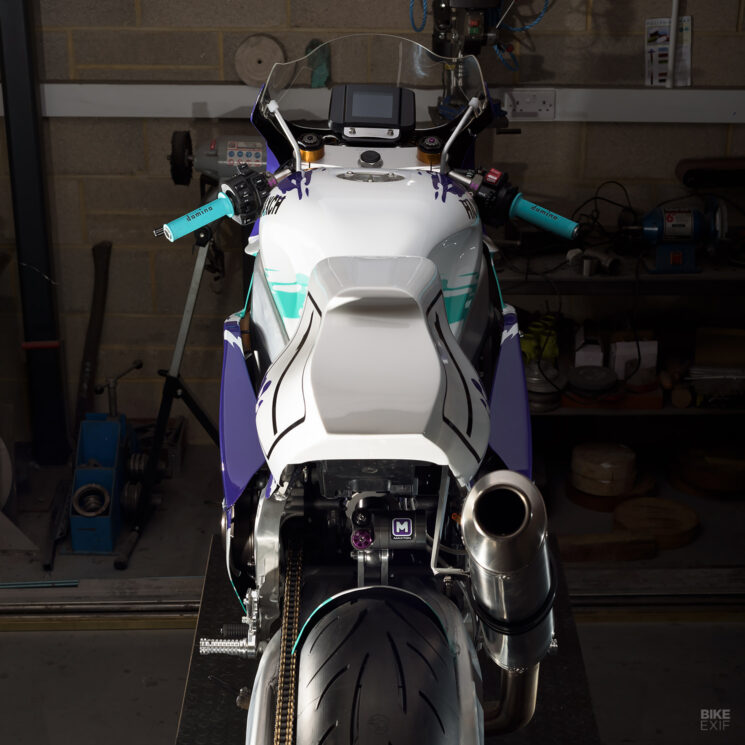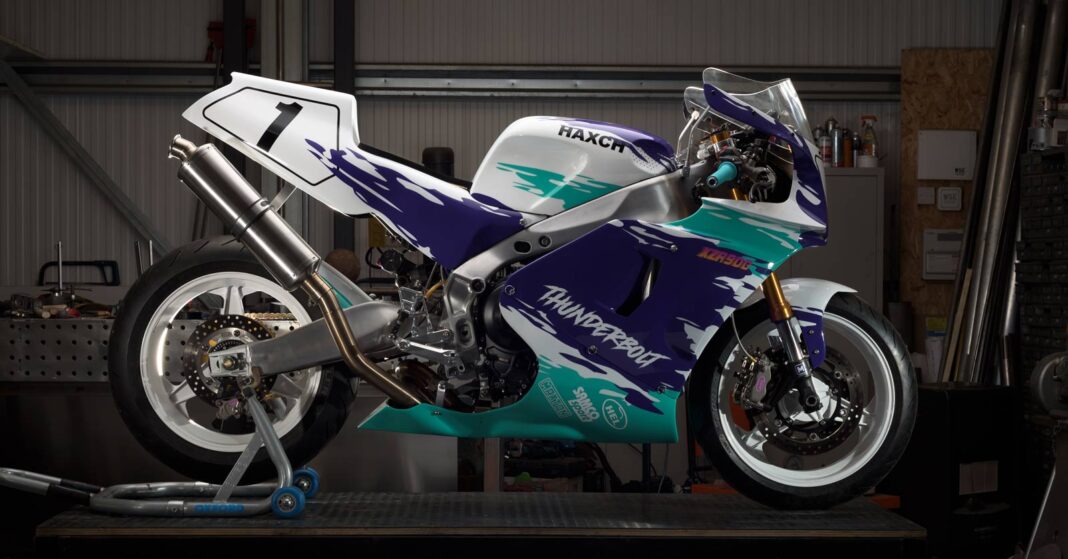The 90s sportbike revival is in full swing, and custom builders like Marc Bell are setting the pace. A full-time metal fabricator with an unwavering love for retro sportbikes, Marc has built some of the best late-80s and early-90s restomods we’ve seen under the HAXCH Moto banner. If it’s got perfectly proportioned bodywork, a lust-worthy livery, and buckets of retro charm, chances are it’s a HAXCH creation.
Marc typically uses period-correct donors, but his latest project breaks the mold. This time, he’s taken a modern machine—a 2023 Yamaha XSR900—and turned it into a snarling, full-fairing homage to the golden age of sportbikes.
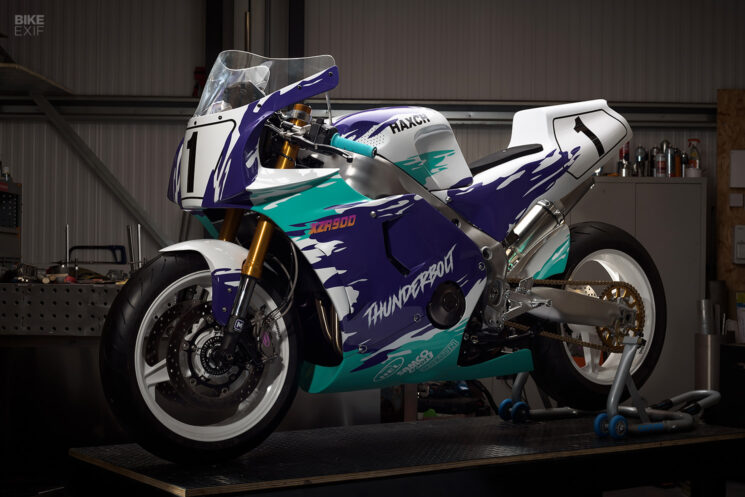
Dubbed the HAXCH Moto Yamaha XZR900 Thunderbolt, this XSR isn’t a replica of any one classic Yamaha. Instead, it’s an amalgamation of elements from several of Marc’s favorite models, rolled into one.
“There are details from the YZF750, TZR250, FZR400, and YZR500 in there,” says Marc, “but as a whole, it isn’t a replica of any of them. I tried to capture the design language of 90s Yamahas—so that it feels like a Yamaha, but is an original design. That’s a super tricky thing to do.”
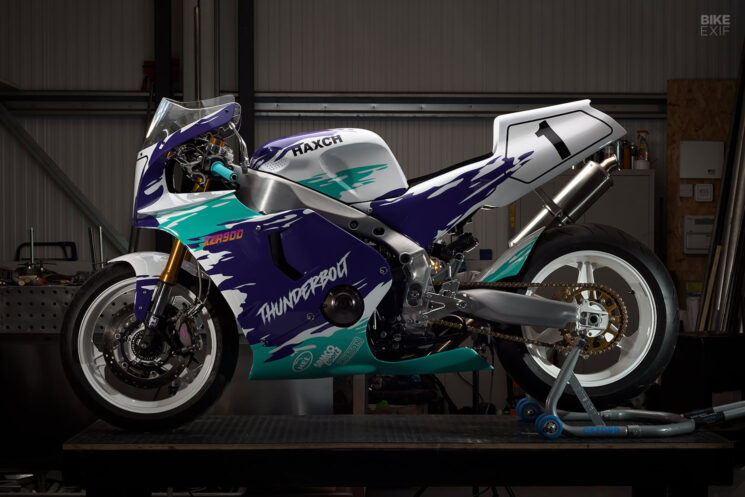
“I studied hundreds of photographs and obsessed over the details—how they shaped and designed panels in the 90s—and tried to emulate that in a way tailored to this bike. It has a really narrow frame, so it lends itself to 250 proportions. But getting it to look good from every angle took thousands of hours and over a year of work—and most of that time was spent just staring at it.”
Beneath the surface of the Yamaha XSR900’s heavily revised aesthetic lies a smorgasbord of well-judged upgrades and details. But it’s the all-new bodywork that truly shows off Marc’s skill. The man is used to doing high-end metalwork for designers, architects, and artists, so the biggest job was fabricating all-new bodywork from aluminum sheets.
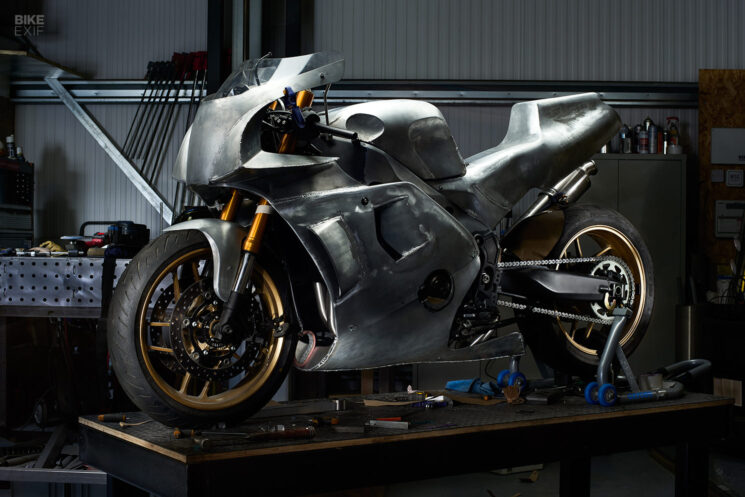
Using traditional tools, like an English wheel, Marc shaped a full fairing with a belly pan, a deeply sculpted tank cover, and a blocky tail section. A handmade fuel cell hides under the cover, while quarter-turn fasteners along the bottom of the fairing give it a race bike feel. Snug fenders hover over the tires at both ends.
The overall design is dripping with late 80s and early 90s Yamaha style. Like a well-constructed mixtape, the Japanese brand’s greatest design hits are scattered throughout the XSR. From the triangular profile of the fairing, to the subtle perforations on the fuel tank and the way the blocky tail section narrows towards the top, everything harmonizes beautifully.
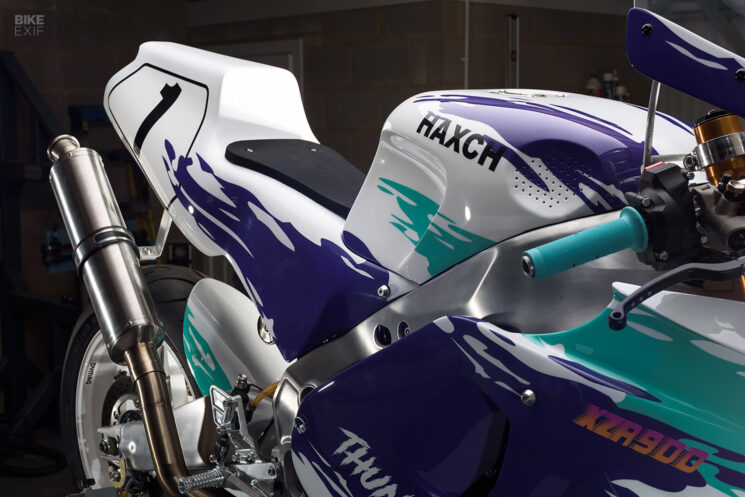
Some of Marc’s modifications are harder to spot—like the bespoke subframe that not only accommodates the new tailpiece, but also weighs a whole lot less than the stock unit. A skinny race pad offers just enough cushioning for track use. Up in the cockpit, elegant fairing stays loom over a CNC-machined top yoke from Emesco Designs.
Marc doesn’t just love retro sportbikes, he races them too. So the XSR900 was inevitably treated to several upgraded parts to complement its looks.
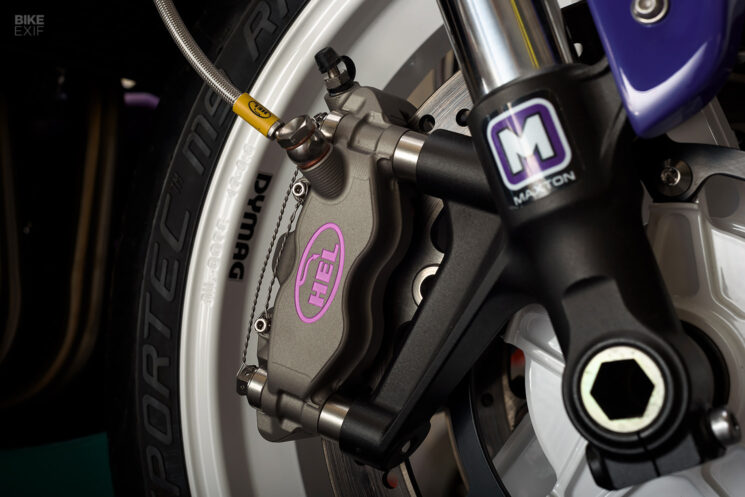
Maxton Suspension came to the party with new fork internals and a custom-built rear shock. Not only is the XSR900 better sprung now, but there’s a full range of adjustability at both ends. The forks have been lowered a hair, and the rear has been lifted by way of a custom-designed billet aluminum linkage.
The Yamaha rolls on three-spoke Dymag wheels that once again shave weight while looking perfect. Brake calipers, hoses, and controls from HEL Performance help keep the XSR in check. Other components include handmade clip-ons with Bike Torque Racing clamps, color-matched Domino grips, and custom rear-sets from Emesco Designs.
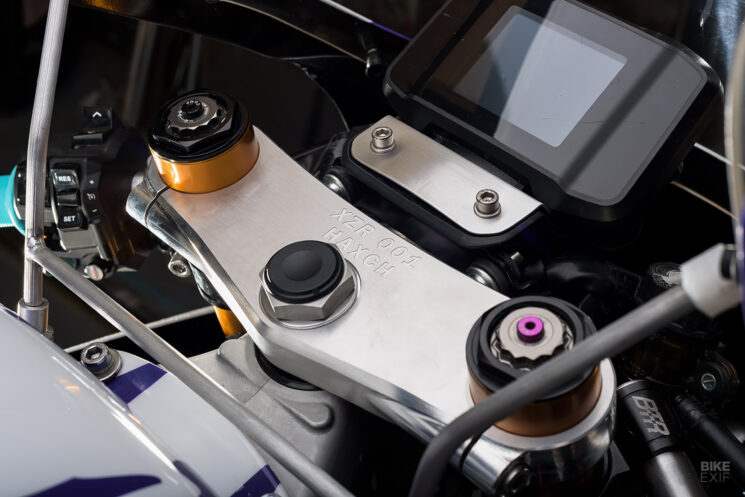
We speak from experience when we say that the XSR900’s motor is a peach; a rev-happy triple that sounds as rowdy as it feels, even in stock form. But that didn’t stop Marc from adding a massive period-correct exhaust muffler, before handing the bike over to Seton Tuning. In their capable hands, the XSR was dyno tested and remapped, unlocking 10 percent more power.
This neo-retro also weighs significantly less than it did before—which, as any seasoned racer will tell you, is one of the best upgrades you can make. “I wanted to channel the soul of the 90s race era but deliver it with modern performance and craftsmanship, with factory build quality,” Marc explains.

Marc isn’t just known for his fabrication skills—he has an eye for a wild livery too. As he did with the bodywork, he borrowed ideas from Yamaha’s style guide of the time to create a design that, although it feels familiar, is utterly unique.
Image Design Custom brought his vision to life in vivid shades of purple and teal, creating a livery that handily tops anything currently on the MotoGP grid.
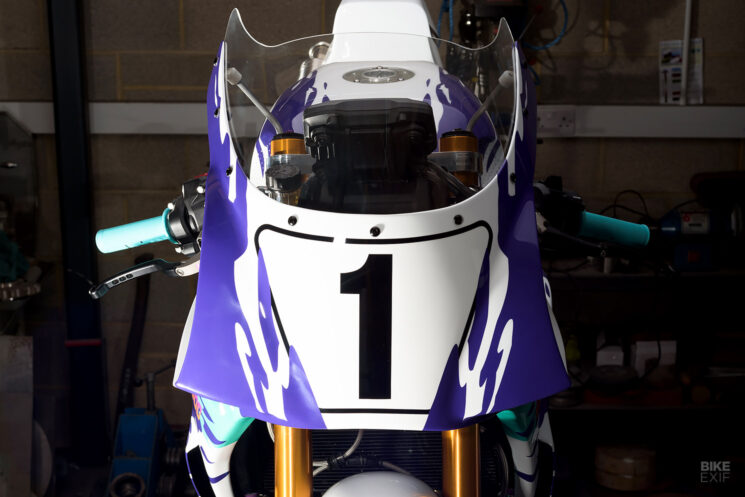
What’s missing from the HAXCH XZR900 Thunderbolt are lights, turn signals, and a place to hang a license plate. But those are all in the works, because Marc plans to use this build as a prototype for a limited production series.
Interested parties, please form an orderly queue… behind us.
HAXCH Moto Instagram | Images by Callum Banister
